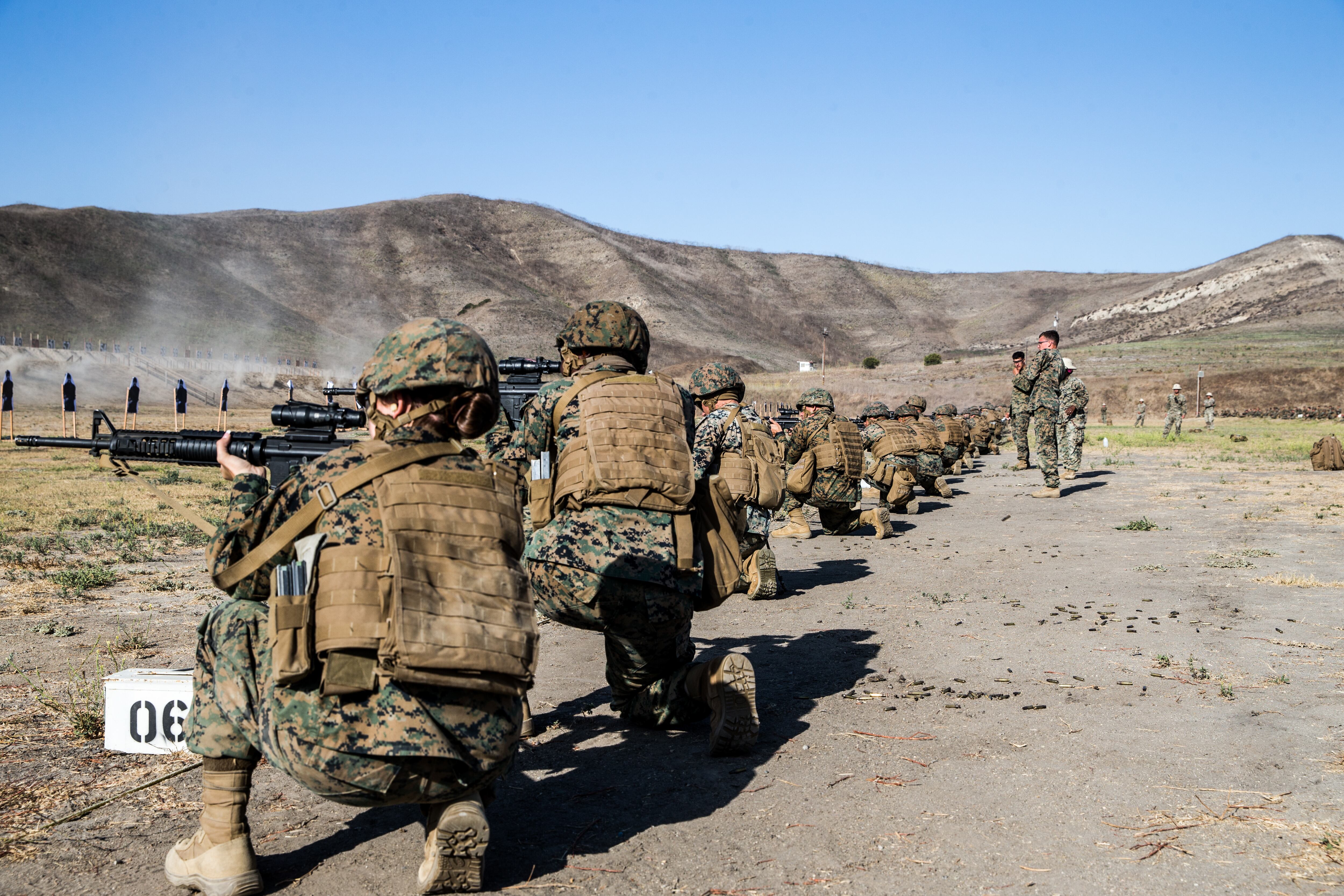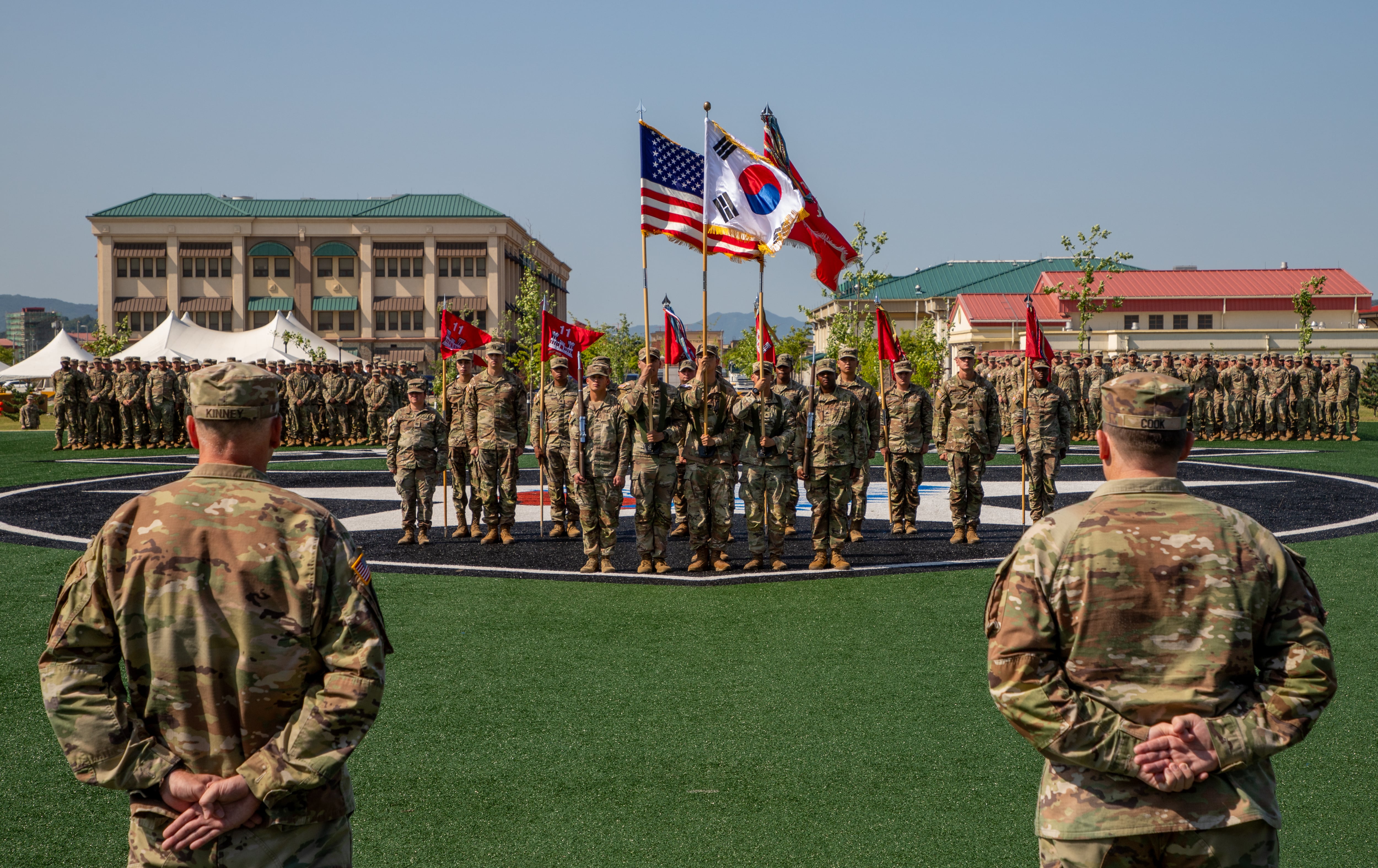Changes are coming to the annual rifle qualification, and they’re coming soon.
Marines will be shooting in more realistic scenarios, wearing combat gear, hitting moving targets and shooting drills in sequence if they want to qualify with their individual weapon, be that an M16, M4 or M27.
In a call with reporters, the heads of Marine Corps marksmanship training detailed the changes, which will start rolling out in the coming months.
But say goodbye to the 1900s-era rifle training that generations of Marines have slogged through two weeks every year. Because as of Oct. 1 every Marine will be doing their annual rifle qualification, as it is now known, under this new, more demanding system.
“We came up with a course of fire that gives time back to commanders,” said Col. Mark Liston, commanding officer, Weapons Training Battalion at Quantico, Virginia.
RELATED

Unless you’re a new officer candidate or recruit, in that case the traditional initial marksmanship training and two weeks of snapping in drills, shooting slick and in the century-old standing, kneeling, sitting and prone positions will still apply.
But for the rest of the Marine Corps, a lot is going to change. There’s no more sitting position, shooters will wear combat gear from head to toe and use barricades, even the old targets are gone. A new “bad guy” photo, complete with a weapon, skullcap, dark sunglasses and short beard, replaces the round bull’s eye and shoulder outlines of old.
Where you hit the target matters a lot more now.
“We’ve shifted the target down to a human target,” Liston said. “You do need to strike in what have been identified as lethality zones.”
“Anything outside of these zones one could suggest it’s not a physiological stop,” said Chief Warrant Officer 5 John Costa, director of the marksmanship program management at the training battalion.
That’s because an operational analysis conducted in 2018 showed “lethality gaps” in which Marines were having problems hitting moving targets and hitting human targets in ways that would incapacitate the person.
To fill that gap, Marines must hit in “lethality zones,” basically a centered coffin-shaped area in the face or a home plate-shaped zone in the center of the chest. Nicking a shoulder, grazing arm or cheek won’t cut it anymore.
The Weapons Training Battalion experts will train the marksmanship coaches and trainers of II Marine Expeditionary Force at Camp Lejeune, North Carolina, in early March; I and III MEF Marine trainers in late March; and a makeup date in Quantico, Virginia, in June for those who missed.
By Oct. 1, all active-duty units must be prepared to begin the ARQ for score. Some may begin qualifications sooner. The Corps expects to complete implementation in the reserves by next year.
There won’t be a score discrepancy for promotions in the interim between the old qualification and the ARQ, because they’ve developed a scoring conversion so scores are equivalent.
Shooting will run the way it does in combat ― closing with the enemy.
Instead of the current system of starting at 100 yards and moving out to 500 yards, Marines will begin at the 500-yard line and then move in to the 300, 200 and 100 yard lines before finishing with close-up drills at 25 yards and a 25 to 15 yard movement toward the target before backing up to the 100, 200, 300, and 500 yard lines.
And much like the physical fitness test or the combat fitness test, the score from all events will matter, but a Marine must pass with a minimum score in each.
For example, on the old system a Marine could miss all of their shots at a certain distance but make them up elsewhere. That’s no longer the case.
Marines will have to rack up a certain number of “destroys” or rounds placed within the lethality zones of the target as well as conduct the specific “drills” for each station.
These are the three drills, all of which begin at the 25 yard line.
• First is a “failure to stop.” That requires the Marine to fire two shots to the chest then one to the brain box at a 25 yard distance. If the Marine doesn’t do the drill correctly, he is unqualified for that portion. They’ll do this four times.
• Then the Marine does a 25 yard box drill. That’s similar to a failure to stop but involves two targets. The Marine fires two chest shots in the first target, two chest shots into the second then one head shot into the second followed by a final head shot into the first. They’ll do this four times.
• The third drill is beginning at the 25 yard line the Marine is told to “advance” and walks toward the target, firing the failure to stop drill while moving. They’ll do this twice.
The “destroys” are as follows:
• 25 yard line headshot, standing position. The Marine shoots this six times.
• 100 yard line moving targets that are exposed for eight seconds. The Marine fires two rounds on each of seven exposures standing or kneeling positions and may use barricades.
• 100 yard line controlled pair. Again, two rounds for eight seconds on stationary target seven times. The Marine can do standing or kneeling positions and may use barricades.
• 200 yard line movers, same scenario, exposure, rounds, position and iterations as 100-yard line.
• 200 yard line controlled pair. Same scenario, rounds, iterations and positions as 100-yard line pair, but 10 seconds exposure.
• 300 yard line controlled pair, Marine can choose standing, kneeling or prone positions and must run eight iterations, two rounds each for a 15-second exposure.
• 500 yard line allows the Marine to shoot standing or supported prone position for five rounds of eight iterations at 45 seconds.
If the Marine is issued a bipod, they can use it. They can also use their assault pack or rest their weapon magazine on the deck to achieve better stability like they might in a real shooting situation.
The moving targets are exposed for eight seconds, moving at about 4 mph across a 16-foot distance first left to right then back left again.
If it sounds more challenging, that’s because it was designed to be. And the data from a yearlong pilot study done in 2020 backs it up.
Currently, about 65 percent of Marines make the expert qualification and about 6 percent don’t qualify at all. Under the past year’s pilot program, organizers saw only about 6 percent of Marines who shot the ARQ make expert and nearly one in ten didn’t qualify at all.
But don’t start sweating bullets, the Corps is unlikely to see a wave of pizza boxes pinned to the chests of once expert shooters.
Those low numbers of experts were chalked up to a lot of factors. First of all, those in the pilot basically showed up, saw what they had to do and shot the course. There was very little preparation or training beyond the basic familiarization with the new demands. Also, in the pilot study there were no re-qualifications, Costa said.
The new course gives marksmanship experts a new kind of scoring and a new definition of what each level of shooter is capable.
Classifications:
• Expert – A shooter who can achieve lethal effects on a threat under any circumstance, at any distance, from any position.
• Sharpshooter – A shooter who can achieve lethal effects on a threat under most circumstances, at most distances, from most positions.
• Marksman – A shooter who can achieve lethal effects on a threat under some circumstances at some distances from some positions.
Shooters have a total of 50 “destroy” target presentations and three different drill types with a total of 10 drill presentations. A destroy requires one hit per presentation in either the face or chest destroy zones.
To make the cut, the following scoring is used:
• Expert – 43 to 50 destroys and one presentation of each type of drill.
• Sharpshooter – 31 to 42 destroys and one presentation of two types of drill.
• Marksman – 15 to 30 destroys and one presentation of any type of drill.
The drills are pass/fail and must be executed properly.
Some additional challenges that had been floated during the pilot phase have not been included, for now.
That included night fire for score using night vision devices and shooting while wearing a gas mask for scoring. Those were dropped primarily because not all Marines in both the active and reserve components have that gear issued to them, Liston said.
Marines will shoot their assigned individual weapon, whether that’s the M16, M4 or M27 Infantry Automatic Rifle. And they’ll use the optic they’re issued as well.
The Marines began fielding the new squad common optic to infantry and reconnaissance units in January. It has double the magnification power of the rifle combat optic currently in use.
But, Costa said, in their pilot testing they saw little difference in performance on the ARQ between different rifles and optics.
Todd South has written about crime, courts, government and the military for multiple publications since 2004 and was named a 2014 Pulitzer finalist for a co-written project on witness intimidation. Todd is a Marine veteran of the Iraq War.




